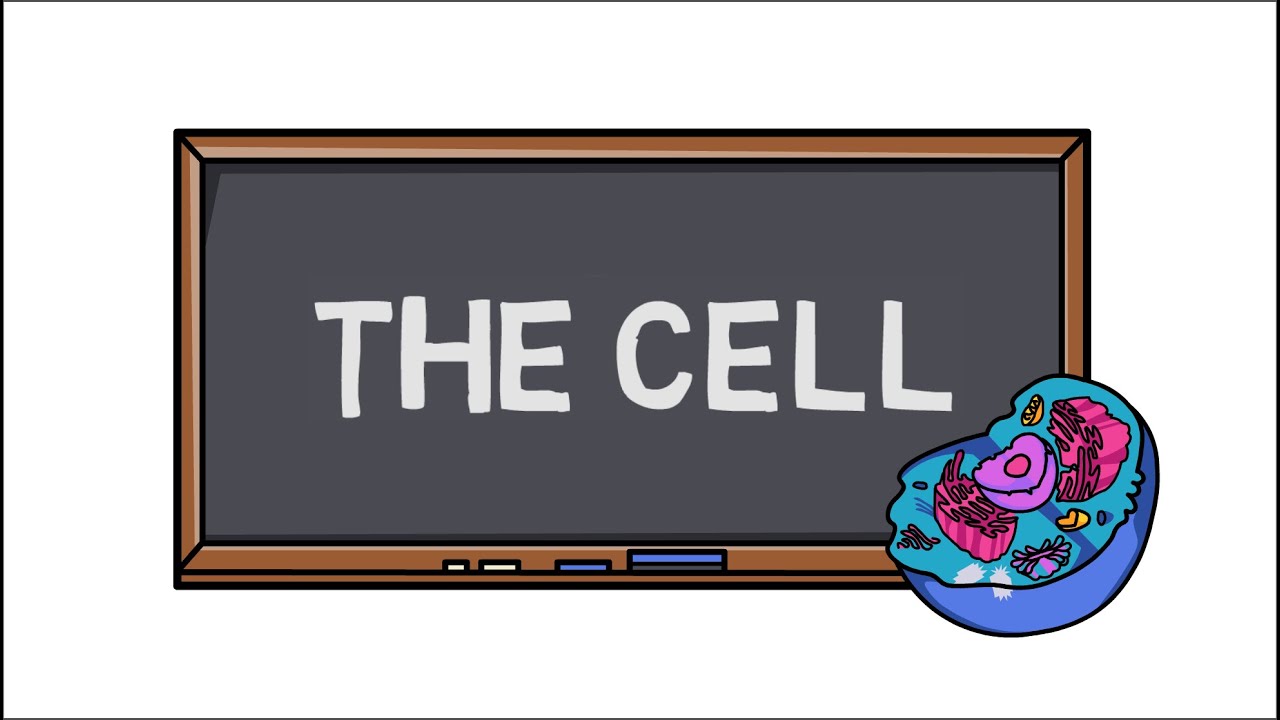What are cells | Cells | Biology | FuseSchool
Summary
TLDRThis video explores the fascinating world of cells, the fundamental building blocks of life. It delves into the concept that every organism, from plants to humans, is composed of cells, which are self-contained units akin to rooms in a house. The video surprises viewers with the fact that humans have around 50 trillion cells, with about 10 billion in a single finger. It highlights the diversity in cell shapes and sizes, from microscopic to visible, such as the yolk of a chicken egg. The video also touches on the various functions of cells, both individual and collective, in multicellular organisms, like the coordinated effort of heart cells to pump blood. It invites viewers to learn more about the diverse types of cells and their roles in life.
Takeaways
- 🌿 **Cells are the building blocks of life**: Every living organism, from plants to humans, is composed of cells.
- 🔬 **Cells are the smallest living units**: Defined as the smallest structures that can be classified as living.
- 🤲 **Humans have about 50 trillion cells**: This staggering number is the estimated total number of cells in the human body.
- 👀 **Cells are incredibly diverse**: They come in various shapes and sizes, with some large enough to be seen without a microscope, like the yolk of a chicken egg.
- 🧬 **Cells have specialized functions**: Each type of cell performs specific jobs, such as a sperm cell's ability to swim or a peacock cell's production of colorful pigments.
- 🤝 **Cells work in harmony**: In multicellular organisms, cells not only perform individual tasks but also collaborate with others for the organism's overall function.
- ❤️ **The heart as an example of cellular cooperation**: Heart cells work together to pump blood throughout the body.
- 🧐 **Cells can exist independently**: Some organisms, like bacteria and amoebas, are composed of single cells that can function on their own.
- 🔎 **Cell size is relative**: Most cells are microscopic, fitting about 10 across the width of a human hair.
- 📺 **Educational resources available**: The script encourages viewers to learn more about cells and engage with the content through likes, subscriptions, and comments.
Q & A
What is a cell and why is it important?
-A cell is a small, self-contained unit within an organism, often referred to as the building blocks of life. It is the smallest unit that can be classified as a living thing and is crucial for the structure and function of all living organisms.
How many cells are estimated to be in the human body?
-There are approximately 50 trillion cells in the human body, making up various tissues and organs.
What is an example of a cell that can be seen with the naked eye?
-The yolk of a chicken egg is an example of a single cell that is large enough to be seen without the aid of a microscope.
How small are most cells, and how many can fit across a human hair?
-Most cells are microscopic, so tiny that about 10 of them could fit across the width of a single human hair.
What are some common functions that all cells perform?
-Common functions of cells include making proteins and producing energy, which are essential for the cell's survival and operation.
Can you provide an example of a cell with a specific job related to its type?
-A human sperm cell has the specific job of swimming to facilitate fertilization, while cells in a peacock's tail are responsible for producing pigments that create the bird's vibrant colors.
How do cells function in single-celled organisms compared to multicellular organisms?
-In single-celled organisms like bacteria or amoebas, a single cell performs all necessary functions. In contrast, in multicellular organisms, cells specialize and work together with other cells to perform complex tasks.
What is an example of how cells work together in a multicellular organism?
-The cells of the heart work in unison to pump blood throughout the body, demonstrating the coordinated effort of cells in a multicellular system.
What is the significance of the variety in cell shapes and sizes?
-The variety in cell shapes and sizes allows for specialization and adaptation to specific functions within an organism, contributing to the organism's overall complexity and efficiency.
How can one learn more about different types of cells?
-One can learn more about different types of cells by watching educational videos, subscribing to science channels, and exploring related apps or resources that provide detailed information on cellular biology.
What is the role of cells in the overall health and function of an organism?
-Cells play a critical role in the health and function of an organism by performing their specific tasks and working together with other cells to maintain the organism's structure, growth, and response to its environment.
Outlines

Esta sección está disponible solo para usuarios con suscripción. Por favor, mejora tu plan para acceder a esta parte.
Mejorar ahoraMindmap

Esta sección está disponible solo para usuarios con suscripción. Por favor, mejora tu plan para acceder a esta parte.
Mejorar ahoraKeywords

Esta sección está disponible solo para usuarios con suscripción. Por favor, mejora tu plan para acceder a esta parte.
Mejorar ahoraHighlights

Esta sección está disponible solo para usuarios con suscripción. Por favor, mejora tu plan para acceder a esta parte.
Mejorar ahoraTranscripts

Esta sección está disponible solo para usuarios con suscripción. Por favor, mejora tu plan para acceder a esta parte.
Mejorar ahoraVer Más Videos Relacionados

Cells for Kids | Learn about cell structure and function in this engaging and fun intro to cells

027 Die Zelle Baustein des Lebens Meilensteine der Naturwissenschaft & Technik

Part 11 The Cell & Type of Cell

The Cell | Discovery of first Cell | Cell Theory |

Struktur dan Fungsi Komponen Sel Tumbuhan

Discovery Video - Cells
5.0 / 5 (0 votes)
